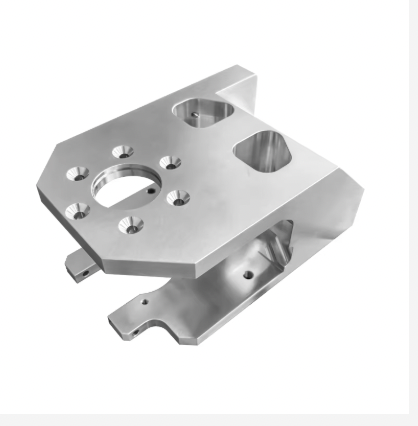Understanding Precision and Control in Modern CNC Manufacturing
In today's advanced manufacturing landscape, CNC machining accuracy stands as the cornerstone of quality production. The ability to maintain consistent precision across various machining methods not only ensures product quality but also directly impacts manufacturing efficiency and cost-effectiveness. Modern CNC systems have revolutionized the way we approach precision manufacturing, yet maintaining optimal accuracy requires a comprehensive understanding of multiple factors and careful attention to detail.
The challenge of maintaining CNC machining accuracy becomes particularly crucial as industries demand increasingly complex parts with tighter tolerances. From aerospace components to medical devices, the margin for error continues to shrink, making it essential for manufacturers to master the fundamentals of precision control while adapting to evolving technologies and methodologies.
Fundamental Elements of CNC Machining Precision
Machine Calibration and Maintenance Protocols
Regular calibration serves as the foundation for maintaining CNC machining accuracy. A well-calibrated machine ensures that all axes move exactly as programmed, producing parts that meet specified dimensions. This involves routine checking of linear and rotary axes, spindle alignment, and tool center point accuracy. Implementing a structured maintenance schedule helps prevent drift in accuracy over time.
The maintenance protocol should include daily, weekly, and monthly checks of critical components. This encompasses monitoring coolant levels, lubricating moving parts, checking for wear and tear, and ensuring all sensors function correctly. Environmental factors such as temperature and humidity must also be controlled, as they can significantly impact machining precision.
Tool Management and Optimization
Effective tool management plays a crucial role in maintaining CNC machining accuracy. This includes proper tool selection, regular tool wear monitoring, and implementing tool compensation strategies. Using high-quality cutting tools and understanding their optimal operating parameters helps achieve consistent results across different machining operations.
Tool life monitoring systems can help predict when tools need replacement, preventing accuracy issues before they occur. Additionally, implementing tool presetting practices ensures that tool dimensions are accurately known before machining begins, reducing setup time and potential errors.
Advanced Techniques for Enhanced Precision
Digital Twin Technology Integration
The implementation of digital twin technology represents a significant advancement in maintaining CNC machining accuracy. This approach creates a virtual replica of the physical machining process, allowing operators to simulate and optimize operations before actual production begins. Through real-time monitoring and analysis, potential accuracy issues can be identified and resolved proactively.
Digital twins also enable manufacturers to predict machine behavior under various conditions, optimize cutting parameters, and develop more efficient toolpaths. This technology proves particularly valuable when working with complex geometries or when maintaining tight tolerances is critical.
Automated Quality Control Systems
Modern quality control systems incorporate in-process measurement and automated inspection techniques to maintain CNC machining accuracy. These systems can detect deviations in real-time, allowing for immediate corrections to maintain precise dimensions. Advanced probe systems and laser measurement tools provide accurate data for continuous process improvement.
The integration of artificial intelligence and machine learning algorithms helps identify patterns and predict potential accuracy issues before they become problematic. This predictive capability enables proactive maintenance and adjustment of machining parameters to maintain optimal precision.
Environmental and Operational Considerations
Temperature Management Strategies
Thermal stability plays a crucial role in maintaining CNC machining accuracy. Temperature fluctuations can cause material expansion or contraction, affecting final dimensions. Implementing proper climate control systems and allowing materials to stabilize at room temperature before machining helps maintain consistent results.
Advanced thermal compensation systems can automatically adjust for temperature-related variations, ensuring maintained accuracy even during extended machining operations. Regular monitoring of both ambient and machine temperatures helps identify potential issues before they impact part quality.

Vibration Control and Stability
Minimizing vibration is essential for maintaining CNC machining accuracy, particularly during high-speed operations. This involves proper machine foundation design, isolation from external vibration sources, and optimization of cutting parameters to avoid resonance frequencies.
Modern vibration monitoring systems can detect unusual patterns that might indicate developing problems with bearings, spindles, or other components. Implementing appropriate damping solutions and maintaining proper tool balance helps ensure stable cutting conditions.
Future Trends in Precision Manufacturing
Artificial Intelligence and Machine Learning Applications
The integration of AI and machine learning continues to revolutionize how we maintain CNC machining accuracy. These technologies enable more sophisticated error prediction and correction mechanisms, leading to improved precision and reduced waste. Smart manufacturing systems can automatically adjust parameters based on real-time feedback and historical data analysis.
Future developments in AI-driven manufacturing will likely include more advanced adaptive control systems that can optimize machining parameters in real-time, further enhancing accuracy and efficiency. These systems will become increasingly important as part complexity and precision requirements continue to increase.
Advanced Materials and Cutting Technologies
The evolution of cutting tool materials and coatings continues to push the boundaries of what's possible in terms of CNC machining accuracy. New super-hard materials and advanced coating technologies enable longer tool life and more precise cutting operations, even with difficult-to-machine materials.
Emerging technologies such as hybrid manufacturing processes, combining traditional CNC machining with additive manufacturing, open new possibilities for achieving enhanced precision in complex parts. These innovations require careful consideration of how to maintain accuracy across different manufacturing methods.
Frequently Asked Questions
What factors most significantly impact CNC machining accuracy?
The most critical factors affecting CNC machining accuracy include machine calibration, tool condition, thermal stability, vibration control, and proper maintenance procedures. Environmental conditions and operator expertise also play crucial roles in maintaining consistent precision.
How often should CNC machines be calibrated?
CNC machines typically require calibration at regular intervals, with full calibration recommended every 6-12 months depending on usage intensity and precision requirements. However, certain critical measurements should be checked daily or weekly as part of routine maintenance procedures.
What role does software play in maintaining machining accuracy?
Software plays a vital role through CAM programming, tool path optimization, and real-time monitoring systems. Advanced software solutions incorporate compensation algorithms, simulation capabilities, and predictive maintenance features that help maintain consistent accuracy throughout the manufacturing process.
How can thermal variations be effectively managed in CNC machining?
Thermal variations can be managed through climate-controlled environments, proper warm-up procedures, thermal compensation systems, and strategic scheduling of operations. Regular temperature monitoring and the use of thermal-stable materials also help maintain consistent accuracy across different machining methods.

